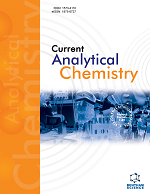
Full text loading...

This paper highlights the exploitation of the cutting-edge technology of synchrotron radiation in the analytical strategies for various materials. Synchrotron radiation is dedicated to the emission of ultra-relativistic electrons as they travel around magnetic fields within a vacuum chamber. The architecture of a synchrotron facility depends on advancements in the relevant technology. Synchrotron radiation offers outstanding properties, including high brightness, high polarization, and pulsed-light emission. The distinctive features of high-resolution monochromatization and submicron resolution of synchrotron beamlines allow for a continuous band of the electromagnetic spectrum. The synchrotron beamlines are specifically designed for dedicated applications that fall into one of four aspects: spectroscopy, diffraction, scattering, and imaging. Such synchrotron-based methods are highly useful for investigating the composition, structure, morphology, and physico-chemical properties of materials. Among these methods, angle-resolved photoemission spectroscopy (ARPES) serves as a good experimental probe for mapping the electronic structure as a function of energy and momentum in crystalline solids and thin films. ARPES offers valuable insights into the physical properties of various material systems, including topological materials, high-temperature superconductors, graphene, transition metal dichalcogenides, heterostructures, and buried interfaces. Recent technological developments have expanded the scope of ARPES: spin-resolved ARPES, time-resolved ARPES, soft X-ray ARPES, and nano-resolved ARPES.

Article metrics loading...

Full text loading...
References


Data & Media loading...